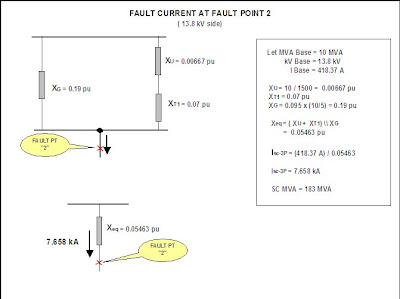OBJECTIVES
DEFINITION OF TERMS
CURRENT TRANSFORMER SPECIFICATIONS
VOLTAGE TRANSFORMER SPECIFICATIONS
OBJECTIVES
To discuss the different kinds of Instruments Transformers
To know the difference between a Current Transformer VS Voltage Transformer
How to specify the different kinds of Instrument Transformers.
To know how to interpret the different instruments at suppliers catalog.
DEFINITION OF TERMS
instrument transformer: One that is intended to reproduce in its secondary circuit, in a definite and known proportion, the current or voltage of its primary circuit with the phase relation substantially preserved.
current transformer (CT): An instrument transformer intended to have its primary winding connected in series with the conductor carrying the current to be measured or controlled.
voltage transformer (VT): An instrument transformer intended to have its primary winding connected in shunt with the voltage to be measured or controlled.
burden of an instrument transformer: That property of the circuit connected to the secondary winding that determines the active and reactive power at the secondary terminals.
NOTE
—
The burden is expressed either as total ohms impedance with the effective resistance and reactance components, or as the total voltamperes and power factor at the specified value of current or voltage, and frequency.
continuous thermal current rating factor (RF): The number by which the rated primary current of a current transformer is multiplied to obtain the maximum primary current that can be carried continuously without exceeding the limiting temperature rise from 30 °C average ambient air temperature. The RF of tapped-secondary or multi-ratio transformers applies to the highest ratio, unless otherwise stated. (When current transformers are incorporated internally as parts of larger transformers or power circuit breakers, they shall meet allowable average winding and hot spot temperature limits under the specific conditions and requirements of the larger apparatus.)
Excitation losses for an instrument transformer: The power (usually expressed in watts) required to excite the transformer at its primary terminals.
NOTE
—
Excitation losses include core, dielectric, and winding losses due to the excitation current.
multiple-secondary current transformer: One that has three or more secondary windings, each on a separate magnetic circuit, with all magnetic circuits excited by the same primary winding.
multi-ratio current transformer: One with three or more ratios obtained by the use of taps on the secondary winding.
marked ratio or nominal ratio: The ratio of the rated primary value to the rated secondary value as stated on the nameplate.
ratio correction factor (RCF): The ratio of the true ratio to the marked ratio. The primary current or voltage is equal to the secondary current or voltage multiplied by the marked ratio times the ratio correction factor.
percent ratio correction: The difference between the ratio correction factor and unity, expressed in percent [(RCF -1) x 100]
phase angle of an instrument transformer (PA): The phase displacement, in minutes or radians, between the primary and secondary values. The phase angle of a current transformer is designated by the Greek letter beta (b) and is positive when the current leaving the identified secondary terminal leads the current entering the identified primary terminal. The phase angle of a voltage transformer is designated by the Greek letter gamma (g) and is positive when the secondary voltage from the identified to the unidentified terminal leads the corresponding primary voltage.
phase angle correction factor (PACF): The ratio of the true power factor to the measured power factor. It is a function of both the phase angles of the instrument transformers and the power factor of the primary circuit being measured.
NOTE
—
The phase angle correction factor corrects for the phase displacement of the secondary current or voltage, or both, due to the instrument transformer phase angle(s).
For a current transformer, PACF:
PACF = cos (q2 + b)/ cos (q2)
For a voltage transformer, PACF:
PACF = cos (q2 -g)/ cos (q2)
When both voltage and current transformers are used, the combined phase angle correction:
PACF = cos (q2 + b- g)/ cos (q2)
q2 - is the apparent power factor angle of the circuit being measured.
rated current: The primary current upon which the performance specifications are based.
rated voltage: The primary voltage upon which the performance specifications of a voltage transformer are based.
rated secondary current: The rated current divided by the marked ratio.
rated secondary voltage: The rated voltage divided by the marked ratio.
thermal burden rating of a voltage transformer: The volt-ampere output that the voltage transformer will provide continuously at rated secondary voltage without exceeding the specified temperature limits.
transformer correction factor (TCF): The ratio of the true watts or watthours to the measured secondary watts or watthours, divided by the marked ratio.
NOTE
( = RCF x PACF )
The transformer correction factor for a current or voltage transformer is the ratio correction factor multiplied by the phase angle correction factor for a specified primary circuit power factor.
The true primary watts or watthours are equal to the watts or watthours measured, multiplied by the transformer correction factor and the marked ratio.
The true primary watts or watthours, when measured using both current and voltage transformers, are equal to the current transformer ratio correction factor multiplied by the voltage transformer ratio correction factor multiplied by
the marked ratios of the current and voltage transformers multiplied by the observed watts or watthours. It is usually sufficiently accurate to calculate true watts or watthours as equal to the product of the two transformer correction factors multiplied by the marked ratios multiplied by the observed watts or watthours.
Current Transformers
Terms in which ratings shall be expressed The ratings of a current transformer shall include:
a) Basic impulse insulation level in terms of full-wave test voltage (see tables 2 and 3)
b) Nominal system voltage, or maximum system voltage (see tables 2 and 3)
c) Frequency (in Hertz)
d) Rated primary and secondary currents (see tables 7 and 8)
e) Accuracy classes at standard burdens (see 6.3, 6.4, and tables 6 and 9)
f) Continuous thermal current rating factor based on 30 °C average ambient air temperature (see 6.5)
g) Short-time mechanical current rating and short-time thermal current rating (see 6.6)
* - ******
ACCURACY CLASS FOR RELAYING C.T.
“the accuracy ratings assigned to a metering current transformer might be C400, K200, and T100.”
C, K, or T, classification.
C or K classification covers current transformers in which the leakage flux in the core of the transformer does not have an appreciable effect on the ratio or ratios within the limits of current and burden outlined in this subclause, so that the ratio can be calculated in accordance with 8.1.10.
T classification covers current transformers in which the leakage flux in the core of the transformer has an appreciable effect on the ratio within the limits specified
An appreciable effect is defined as a 1% difference between the values of actual ratio correction and the ratio correction calculated in accordance with 8.1.10.
Secondary terminal voltage rating.
This is the voltage the transformer will deliver to a standard burden at 20 times rated secondary current without exceeding 10% ratio correction. Furthermore, the ratio correction shall
be limited to 10% at any current from 1 to 20 times rated secondary current at the standard burden or any lower standard burden used for secondary terminal voltage ratings
******
C100 RELAYING C.T.
For example, on a current transformer with 5 A rated secondary current, relay accuracy rating C100 means that the ratio can be calculated and that the ratio correction will not exceed 10% at any current from 1 to 20 times rated secondary current with a standard 1.0 ohm burden (1.0 ohms x 5 A x 20 x rated secondary current = 100 V).
Voltage Transformers
Terms in which ratings shall be expressed The ratings of a voltage transformer shall include:
a) Basic impulse insulation level in terms of full-wave test voltage (see tables 10–14 and figures 6a–6h)
b) Rated primary voltage and ratio (see tables 10–14 and figures 6a–6h)
c) Frequency (in Hertz)
d) Accuracy ratings (see 5.3)
e) Thermal burden rating (see 7.4)
Group 1 voltage transformers are for application with 100% of rated primary voltage across the primary winding when connected line-to-line or line-to-ground. (For typical connections, see figures 6a and 6b.) Group 1 voltage transformers shall be capable of operations at 125% of rated voltage on an emergency basis (this capability does not preclude the possibility of ferroresonance), provided the burden, in voltamperes at rated voltage, docs not exceed 64% of the thermal burden rating, without exceeding the following average winding temperatures: 105 °C for 55 °C rise types, 115 °C for 65 °C rise types, and 130 °C for 80 °C rise types. This will result in reduction of life expectancy.
*******
********
Group 2 voltage transformers are primarily for line-to-line services, and may be applied line-to-ground or line-to-neutral at a winding voltage equal to the primary voltage rating divided by the square root of 3. (For typical connections see figures 6c and 6d.) Note that the thermal burden capability will be reduced at this voltage. .
*********
***********
Group 3 voltage transformers are for line-to-ground connection only and have two secondary windings. They may be insulated-neutral or grounded,neutral terminal type. Ratings through 161 000 Grd Y/92 000 shall be capable of the square root of 3 times rated voltage (this capability does not preclude the possibility of ferroresonance) for 1 min without exceeding 175 °C temperature rise for copperconductor or 125 °C rise for EC aluminum. Ratings 230 000 Grd Y/138 000 and above shall be capable of operation at 140% of rated voltage with the same limitation of time and temperature. (For typical connections, see figure .) Group 3 transformers shall be capable of continuous operation at 110% of rated voltages, prodded the burden in voltamperes at this voltage does not exceed the thermal burden rating.
Group 4 voltage transformers are for line-to-ground connection only. They may be insulated-neutral or grounded-neutral terminal type. (For typical connections of Group 4A, see figure 6f. For typical connections of Group 4B, see figure 6g.) Group 4 transformers shall be capable of continuous operation at 110% of rated voltages, provided the burden in voltamperes at this voltage does not exceed the thermal burden rating. Group 4A voltage transformers shall
be capable of operation at 1257percnt; of rated voltage on an emergency basis (this capability does not preclude the possibility of ferroresonance), provided the burden, in voltamperes at rated voltage, does not exceed 64% of the thermal burden rating, without exceeding the following average winding temperatures: 105 °C for 55 °C rise types, 115 °C for 65 °C rise types and 130 °C for 80 °C rise types. (This will result in a reduction of normal life expectancy.)
Group 5 voltage transformers are for line-to-ground connection only, and are for use outdoors on grounded systems. They may be insulated-neutral or grounded-neutral terminal type. They shall be capable of operation at 140% of rated voltage for 1 min without exceeding 175 °C temperature rise for copper conductor or 125 °C rise for EC aluminum conductor. (This will result in a reduction of normal life expectancy.) Group 5 voltage transformers shall be capable of continuous operation at 110% of rated voltage, provided the burden, in voltamperes at this voltage, does not exceed the thermal burden rating. This capability does not preclude the possibility of ferroresonance.
ACCURACY CLASS FOR V.T.
“the accuracy ratings assigned to a metering current transformer might be 0.3 W and 0.6X”





























